Palladium(II) Acetate
-
High-purity palladium catalyst for advanced organic synthesis
-
≥98% purity, COA, MSDS, and full batch traceability
-
Bulk and laboratory packaging, prompt India-wide delivery
-
Expert technical support from chemikalstore.com
- Estimated Delivery : Up to 8 business days
- Free Shipping & Returns : On all orders over ₹1000
Buy Palladium(II) Acetate (Palladiumii-acetate) Online – High-Purity Catalyst for Advanced Organic Synthesis at chemikalstore.com
Palladium(II) acetate (palladiumii-acetate)(CAS 3375-31-3), also known as Pd(OAc)₂ or palladium diacetate, is a cornerstone catalyst in modern organic chemistry. When you buy palladium(II) acetate (palladiumii-acetate) online at chemikalstore.com, you secure a reagent-grade, high-purity compound essential for research, pharmaceutical synthesis, fine chemicals, and advanced materials. This comprehensive guide covers technical properties, safety, applications, and purchasing details—optimized for all key search terms and tailored for laboratory, industrial, and commercial buyers.
What is Palladium(II) Acetate?
Palladium(II) acetate is a red-brown to orange crystalline solid with the formula Pd(OAc)₂ and a molecular weight of 224.51 g/mol. It is a coordination complex where each palladium atom is bonded to two acetate ligands, forming a trimeric structure in the solid state. This compound is widely recognized for its exceptional catalytic activity in C–C, C–N, and C–O bond-forming reactions, making it indispensable in organic synthesis, pharmaceuticals, nanotechnology, and electronics.
Key Chemical and Physical Properties
| Property | Specification |
|---|---|
| Chemical Name | Palladium(II) acetate |
| Synonyms | Palladium diacetate, Pd(OAc)₂, bis(acetato)palladium |
| CAS Number | 3375-31-3 |
| EC Number | 222-164-4 |
| Molecular Formula | C₄H₆O₄Pd |
| Molecular Weight | 224.51 g/mol |
| Appearance | Orange to brown powder/crystals |
| Purity | ≥98% (reagent grade) |
| Density | 2.19 g/cm³ |
| Melting Point | 205°C (decomposes) |
| Solubility | Insoluble in water; soluble in acetic acid, benzene, chloroform, acetone, DCM, MeCN3 |
| Storage Temp | Store below +30°C, dry, sealed |
| Packaging | 1g, 5g, 10g, 25g, 100g, 500g, 1kg bottles/drums |
| Documentation | COA, MSDS, HPLC/ICP reports |
Structure and Reactivity
-
Trimeric Structure: In the solid state, palladium(II) acetate exists as a trimer, with three Pd atoms bridged by six acetate ligands in a butterfly conformation
-
Square Planar Coordination: Each Pd atom achieves square planar geometry, which is optimal for catalytic activity in cross-coupling and other organometallic reactions
-
Solubility: Soluble as a monomer in glacial acetic acid and as a trimer in benzene; insoluble in water
Catalytic and Synthetic Applications
Palladium(II) acetate is a versatile, homogeneous catalyst for numerous organic transformations:
1. Cross-Coupling Reactions
-
Heck Reaction: Arylation and vinylation of alkenes for pharmaceuticals and agrochemicals
-
Suzuki-Miyaura Coupling: C–C bond formation between aryl halides and boronic acids.
-
Stille and Sonogashira Couplings: Synthesis of biaryls, alkynes, and complex molecules.
-
Buchwald-Hartwig Amination: C–N bond formation for amines, anilines, and heterocycles
2. Carbonylation and Functionalization
-
Wacker Process: Oxidation of ethylene to acetaldehyde, precursor to polyvinyl acetate
-
C–H Activation: Direct functionalization of aromatic and aliphatic C–H bonds
-
Carbonylation: Formation of esters, amides, and acids from aryl halides and CO.
3. Nanotechnology and Materials Science
-
Palladium Nanoparticles: Synthesis for use in catalysis, sensors, and drug delivery
-
Electronics: Preparation of conductive inks and pastes for printed circuit boards and flexible electronics
-
Polymer Chemistry: Catalyst for the synthesis of advanced polymers and fine chemicals
4. Analytical Chemistry
-
Mass Spectrometry: Enhances detection of organic compounds in analytical workflows
-
Reference Standard: Used for calibration and validation in trace metal analysis.
Industrial and Research Uses
-
Pharmaceuticals: Key catalyst in the synthesis of APIs, intermediates, and complex heterocycles.
-
Agrochemicals: Enables efficient synthesis of herbicides, fungicides, and crop protection agents.
-
Fine Chemicals: Manufacture of dyes, pigments, fragrances, and specialty chemicals.
-
Academic Research: Fundamental in method development and mechanistic studies.
Technical Specifications and Quality Control
| Parameter | Specification | Test Method |
|---|---|---|
| Purity | ≥98% | HPLC, ICP, TGA |
| Water Content | ≤0.5% | Karl Fischer |
| Residual Metals | ≤0.1% | ICP-OES |
| Appearance | Orange/brown powder | Visual |
| Melting Point | 205°C (dec.) | Capillary method |
| Solubility | Organic solvents | Visual/Titration |
| Identity (NMR/IR) | Conforms | ¹H/¹³C NMR, FTIR |
Safety, Handling, and Storage
Hazard Classification (GHS/CLP)
-
Signal Word: Danger
-
Hazard Statements:
-
H317: May cause an allergic skin reaction
-
H318: Causes serious eye damage
-
H400: Very toxic to aquatic life
-
H410: Very toxic to aquatic life with long-lasting effects
-
-
Precautionary Statements:
-
Avoid breathing dust or vapors
-
Wear gloves, eye protection, and lab coat
-
Wash hands thoroughly after handling
-
Prevent release to the environment
-
First Aid Measures
-
Skin Contact: Wash with soap and water for 15 minutes. Remove contaminated clothing.
-
Eye Contact: Rinse with water for at least 15 minutes. Seek immediate medical attention.
-
Inhalation: Move to fresh air. If symptoms persist, seek medical help.
-
Ingestion: Rinse mouth with water. Seek medical attention if symptoms occur.
Storage and Disposal
-
Store in a tightly closed container in a cool, dry, well-ventilated area away from incompatible substances and sources of ignition
-
Do not store in aluminum or steel containers
-
Dispose of contents/container to an approved waste disposal plant. Avoid environmental release.
Comparison: Palladium(II) Acetate vs. Other Palladium Catalysts
| Catalyst | Key Use | Advantages | Limitations |
|---|---|---|---|
| Palladium(II) acetate | Cross-coupling, C–H activation | Versatile, soluble, high purity | Sensitive to moisture, cost |
| PdCl₂ | Coupling, Wacker process | Stable, less expensive | Less soluble, lower activity |
| Pd(PPh₃)₄ | Suzuki, Sonogashira, Stille | Air-stable, easy to handle | Expensive, limited shelf life |
| Pd/C (palladium on carbon) | Hydrogenation, reduction | Heterogeneous, reusable | Lower selectivity, filtration needed |
How to Buy Palladium(II) Acetate Online at chemikalstore.com
-
Visit chemikalstore.com and search for “palladium(II) acetate online”.
-
Review product details: Purity, batch size, documentation, and price.
-
Enquire or order online: Use the enquiry form for custom or bulk pricing.
-
Secure checkout: Multiple payment options, GST invoicing, and shipment tracking.
-
Receive COA and MSDS: With every batch for regulatory compliance and quality assurance.
Packaging and Supply Options
| Package Size | Application | Typical Users |
|---|---|---|
| 1g, 5g | Laboratory research | Academic, R&D labs |
| 10g, 25g, 100g | Synthesis, pilot scale | Pharma, chemical R&D |
| 500g, 1kg | Bulk, industrial | Manufacturers, CROs |
Bulk and custom packaging available. All shipments include COA, MSDS, and batch traceability.
Frequently Asked Questions (FAQ)
Q1: What is the shelf life of palladium(II) acetate?
A: 24–36 months when stored in a cool, dry, sealed container below 30°C.
Q2: Is it suitable for pharmaceutical manufacturing?
A: Yes, provided it meets ≥98% purity and is accompanied by COA and MSDS for regulatory compliance.
Q3: What solvents is it soluble in?
A: Soluble in acetic acid, benzene, chloroform, acetone, DCM, and acetonitrile; insoluble in water
Q4: Can it be used for nanoparticle synthesis?
A: Yes, it is a precursor for palladium nanoparticles used in catalysis, sensors, and drug delivery
Q5: What documentation is provided?
A: Each shipment includes COA, MSDS, and analytical data (HPLC, ICP, NMR) for regulatory and quality assurance.
Q6: Is it available for export?
A: Yes, chemikalstore.com ships internationally with all required documentation.
Summary Table: Palladiumii-acetate
| Parameter | Value |
|---|---|
| CAS Number | 3375-31-3 |
| Synonyms | Palladium diacetate, Pd(OAc)₂ |
| Molecular Formula | C₄H₆O₄Pd |
| Molecular Weight | 224.51 g/mol |
| Appearance | Orange to brown powder/crystals |
| Purity | ≥98% (reagent grade) |
| Melting Point | 205°C (decomposes) |
| Solubility | Organic solvents, insoluble in water |
| Packaging | 1g–1kg bottles, bulk on request |
| Documentation | COA, MSDS, HPLC/ICP |
| Supplier | chemikalstore.com (India) |

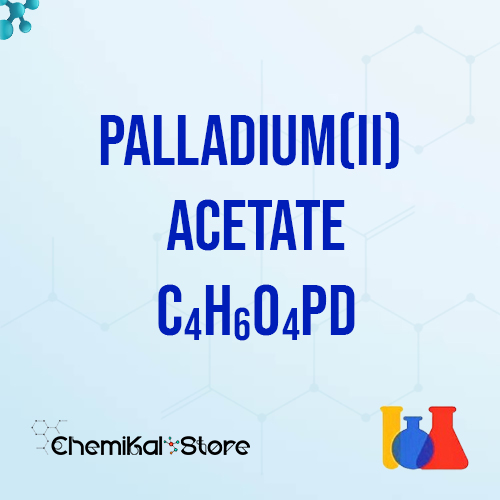



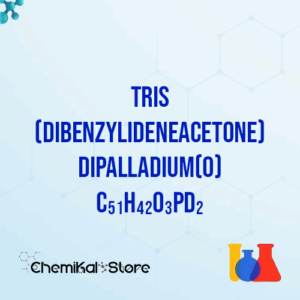

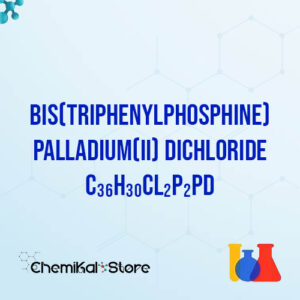
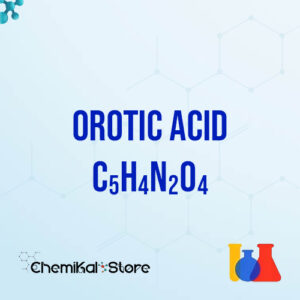
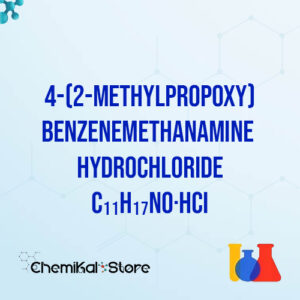







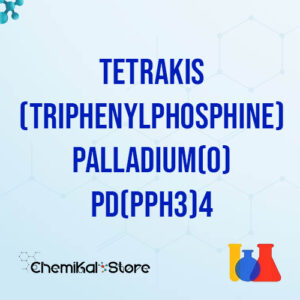
Reviews
There are no reviews yet.